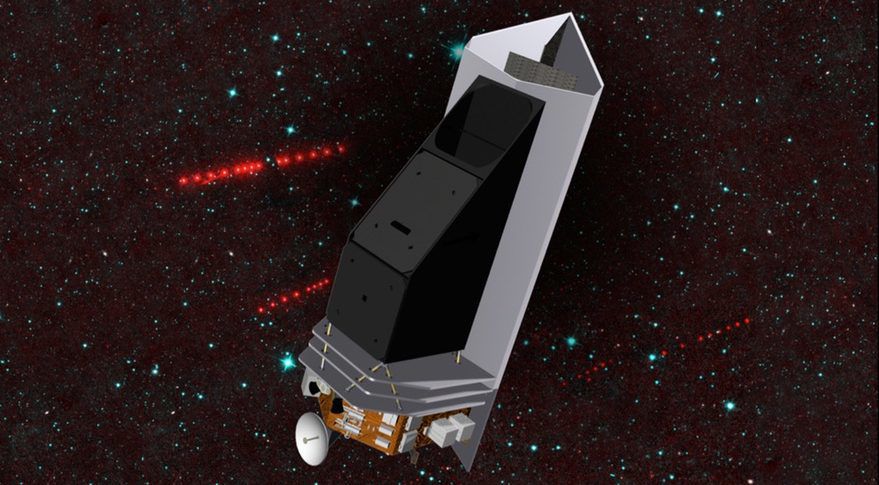A team of astronomers at the University of Arizona is preparing for the next phase of a projected NASA mission to build a space-based telescope capable of detecting asteroids and comets that pose impact hazards to earth.
If plans are approved, the Near-Earth Object Surveillance Mission will launch a spacecraft, called the NEO Surveyor, that will continuously collect infrared images of the sky for at least five years. The spacecraft will use highly sensitive heat-sensing cameras to detect the infrared glow from asteroids that are warmed by the sun as they get close to Earth’s orbit.
Near-Earth objects, or NEOs, are comets and asteroids that have been nudged by the gravitational attraction of nearby planets into orbits that allow them to enter earth’s neighborhood. While NASA has been tracking NEOs for more than 20 years, the NEO Surveyor would take planetary-defense efforts to the next level.
“This mission would answer a fundamental question: Are there asteroids or comets out there that can cause harm to the earth over the next century?” said Amy Mainzer, the survey director and professor at the UA’s Lunar and Planetary Laboratory.
This mission will be the successor to NASA’s Near-Earth Object Wide-field Infrared Survey Explorer, or NEOWISE, which uses a reactivated spacecraft to find, track and characterize near-earth objects. The NEO Surveyor will build on the success of the NEOWISE mission, which is celebrating the 10th anniversary of its launch Dec. 14.
“We’ve learned a lot from NEOWISE about how many asteroids are dark versus bright, and it’s been a valuable precursor mission, but it has now operated long past its expected lifespan,” Mainzer said. “With the NEO Surveyor spacecraft, we can use what we’ve learned from NEOWISE to build a more highly capable and long-lasting spacecraft that will greatly complement the existing network of ground-based telescopes searching the skies for hazardous objects.”
The NEO Surveyor, which could be launched as early as 2025, would survey the skies for at least five years and catalog more than 90% of asteroids larger than 460 feet. The spacecraft will allow astronomers to detect asteroids’ position, movement, size and even identify the composition of their surfaces.
In November, Mainzer and her team met at the UA to plan the next phase of the project.
The next step is to provide the documentation and reviews necessary for NASA to approve a preliminary design phase, which the team is hoping to begin sometime next year. As the survey director, Mainzer would be responsible for all aspects of mission success, with flight project management provided by the Jet Propulsion Laboratory in Pasadena, California.
“More than half of all known potentially hazardous asteroids were discovered by the Catalina Sky Survey and Spacewatch telescopes operated by the University of Arizona over the past two decades,” said UA President Robert C. Robbins. “We have a longstanding tradition as a pioneer in planetary defense, and we are very proud to bring this history to the next level to help protect our planet from impact hazards.”





